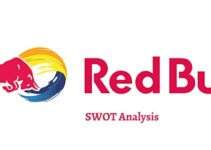Swot analysis of Panasonic. Panasonic Corporation or Matsushita Electrical Industrial Co. Ltd is an electronics manufacturing Japanese multinational company. Konosuke Matsushita was the founder of Panasonic, and he laid the foundation of the company on March 13, 1918. The headquarter of the electronic company is in Kadoma, Osaka, Japan.
Panasonic’s main products and services are;
- Consumer electronics,
- Construction,
- Rechargeable automobile batteries,
- Home renovation,
- Industrial system,
- Avionic system,
- Real estate,
- Software,
- Home appliances.
According to an estimate, the annual revenue of Panasonic in 2022 was 44.455 billion dollars, and it has decreased by 38.94%. Out of which, the net income of the consumer electronic brand was 0.982 billion dollars, and it has declined by 51.74%. However, the company has employed more than 259,358 employees to manage its various operations across the world.
Panasonic’s top competitors are;
Today, we’ll discuss the swot analysis of Panasonic. It’s going to focus on the internal and external factors impacting the world’s leading consumer electronics manufacturing company. Here’s the swot analysis of Panasonic as follows;
Strengths of Panasonic
Sponsoring Events
Panasonic owns the Japanese Professional Football League and Rugby Club and the company partners with the AFC Champion League. However, the brand has also sponsored mega international events like English Football Club Nottingham Forest, Toyota Racing Formula One, NASCAR Busch Series, Olympic Games, Boston Celtic, and many others. Sponsoring such tournaments attracts the attention of a lot of customers and present a better image of the company.
Marketing
Along with sponsoring international events, Panasonic also uses various channels like billboards, social media platforms, print media, TV channels, and others for the promotion and marketing of its company’s products.
Recognized Brand
The sponsorships and marketing have given Panasonic global recognition in the international market. The consumer electronics company is one of the largest companies in Japan.
Top Manufacturer
Panasonic has established many manufacturing units in various countries like India, Indonesia, UK, Serbia, Netherlands, the USA, and many others. In fact, the company falls under the category of the world’s top 20 semiconductor manufacturers and top 5 TV producers.
Product Portfolio
Panasonic offers a diverse range of products and services to cater to the needs of various types of customers. It ranges from consumer electronics, home renovation, batteries, construction, and real estate to industrial.
Brand Value
According to an estimate by Forbes, the market capitalization of Panasonic is 18 billion dollars. The consumer electron brand falls at the 256th position of Global 2000 companies in 2020. The high market value and top ranking show the excellent position of the company.
Market Leader
The worth of Panasonic’s assets is over 60 billion dollars along with its strong market position. It gives the company a leading role in the internal consumer electronic market.
Weaknesses of Panasonic
Fake Replica
Technology and advanced printing machines have made it easier to copy the logo of any of the brands. That’s what is happening with the logo of Panasonic, some manufacturers are illegally selling their poor quality products under the disguise of Panasonic. It’s jeopardizing the main parent brand.
Lower Revenue
It’s no doubt Panasonic is the world’s leading consumer products manufacturing brand. But the growth and annual profitability of the brand have been declining even before the pandemic.
Opportunities available to Panasonic
Semiconductor Growth
The market demand for semiconductors has been growing extensively for the past few years. Panasonic is already operating its business in the consumer electronics industry. Now, the company should exploit this opportunity and launch the semiconductor devices that businesses need.
Developing Markets
The usage of smartphones and other electronic devices is increasing all over the world. Especially the developing countries like Latin America and Asian countries have got great growth potential. Therefore, Panasonic should consider expanding its market there. It would multiply the company’s growth.
Sustainable Products
Healthy trends and environmentally sustainable trends are growing across the globe. People are now preferring brands those brands are following healthy and environmental standards and practices. Therefore, Panasonic should follow environmentally safe practices and market them, it would help the company to attract new customers.
Threats Panasonic has to face
Economic Recession
The oil crisis and international issues have brought about the global economic recession. It has also impacted the growth, sale, and profitability of Panasonic. However, the annual revenue and net income of the company have dropped by 4.32% and 18.8%.
Black Market
Panasonic is also competing with illegally smuggled electronic products in the black market. When people could the same products at a lower price in the streets, they won’t buy through the legal channel which is good for the company.
Tech Development
The rapid technological innovation and development are putting more pressure on Panasonic to keep in terms of increasing research and development costs. That’s why it has become difficult for the company to maintain revenue while keeping up with the trends at the same time.
Competitors
LG, Samsung, Philip, Nikon, and Conon are some of the main competitors of Panasonic. Their market share growth is decreasing the sale and profitability of the company.
Conclusion: Panasonic Swot Analysis Company Example
After a careful study of the swot analysis of Panasonic, we’ve concluded that Panasonic is indeed the world’s leading consumer electronic manufacturing brand. The economic recession, increasing competition, the black market, and fake products are some of the main challenges. Panasonic should utilize its resources and brand name to expand its market; while keeping in mind the internal strengths weaknesses; external opportunities threats of consumer electronics swot analysis example company.

Ahsan Ali Shaw is an accomplished Business Writer, Analyst, and Public Speaker. Other than that, he’s a fun loving person.


